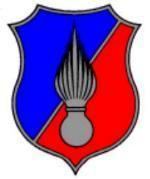Country Belgium Colors blue/red | ||
 | ||
Active 10 July 1796 – 1 April 2001 Branch Ministry of Defence / Ministry of the Interior Engagements The battle of Edemolen (Belgium) 7/10/1914 | ||
The Gendarmerie (French) or Rijkswacht (Dutch) was the former paramilitary police force of Belgium. It became a civilian police organisation in 1992, a status retained until January 1, 2001, when it was, together with the other existing police forces in Belgium, abolished and replaced by the Federal Police and the Local Police.
Contents
Etymology
The word gendarme comes from Old French gens d'armes, meaning men-at-arms, whereas the Dutch name, rijkswacht, means guard of the realm.
Pre-independence
In 1795, the Belgian provinces came under French rule. It was at this time that the Rijkswacht/Gendarmerie was created. This military force had been created a short time before in France itself to replace the Marechaussee (mounted corps of marshals) of the former monarchy. The legislation which organised the new gendarmerie service in Belgium was a law dated April 17, 1798, which remained into force until 1957.
In 1815 the Belgian provinces became part of the United Kingdom of the Netherlands, ruled by King William I. The Dutch renamed the Gendarmerie as the “Royal Marechaussee” and reorganised the force.
Belgium
In 1830 the Belgian revolution occurred. After obtaining its independence the new Belgian state created its own national Rijkswacht/Gendarmerie on the basis of the already existing constabulary. The Rijkswachters/Gendarmes operated throughout the entire country. From its creation, the Rijkswacht/Gendarmerie was formally part of the Belgian Army.
The major strikes and tense social conditions of the 1930s brought important changes in the organization of the Rijkswacht/Gendarmerie, in particular through the expansion of the mobile units created in 1913.
During the Second World War, the Rijkswacht/Gendarmerie was restricted to the role of administrative and legal police force, primarily concerned with road traffic. The majority of the Rijkswachters/Gendarmes refused to collaborate with the German occupiers. It is believed that individual gendarmes assisted the Belgian Resistance. These actions were not tolerated by the occupation authorities and from 1942 onwards the corps was deprived of many of its functions.
After the war, the service was reorganized. New units were created, and at the end of 1957, new legislation relating to the fundamental role of the Rijkswacht/Gendarmerie was passed, envisaged in the Constitution of 1830. This law confirmed the functions of the Rijkswacht/Gendarmerie and its independence from the administrative authorities. The Rijkswacht/Gendarmerie was separated from the Belgian Army Territorial Defense Force, and became a fourth department within the military. The Rijkswacht/Gendarmerie was also authorised to create its own training establishments.
During the 1960s conditions of service improved considerably. This period also saw a major increase in serious crimes (holdups, drugs, terrorism, etc.). The Central Bureau of Investigations (CBO - Centraal Bureau voor Opsporingen (Dutch), BCR - Bureau Central des Recherches) was created, plus a centralized radio network. Tracker dogs were employed for the first time.
During the 1980s, the Rijkswacht/Gendarmerie suffered serious problems. Much of its equipment was outdated, it was significantly understrength, and there were serious financial issues. It was also the period of fighting Communist cells (CCC), serious and deadly criminal activities by gangs (like the Nijvel gang, a case that was never solved) and hooliganism (Heysel Stadium disaster). Several parliamentary commissions blamed the Rijkswacht/Gendarmerie for poor investigations and law enforcement work in these cases. The Rijkswacht/Gendarmerie was threatened with disbandment, and drastic measures were taken to reorganise several units and to improve public relations.
Demilitarisation
On 1 January 1992, the Rijkswacht/Gendarmerie lost its formal military status, resulting in major changes in policies, procedures, and staff regulation. Demilitarisation allowed the force to concentrate all its resources on civilian police work. Its military functions, as well as the supervision of the Ministry of Defence, were removed.
This restructuring occurred after the 'black' 1980s of the Nijvel gang, Heysel Stadium disaster, Cellules Communistes Combattantes (CCC), and other criminal and terrorist activity, against which the Gendarmerie was deemed ineffective.
Disbandment
At the end of the 1990s, following adverse reports arising from the Dutroux Affair, the Belgian government decided to dissolve all the existing police forces. The parliamentary commission, which investigated the errors that were made during the search for the missing children, stated that the three police organisations did not work effectively and efficiently together. There were problems with cooperation and vital information was not exchanged.
Parliament, both the majority and the opposition, decided to abolish the existing structures, and created a new police organisation, structured in two departments: the Federal Police and the Local Police. In 2001, the Rijkswacht/Gendarmerie was dissolved.
Ranks
The ranks of the Rijkswacht/Gendarmerie were:
Senior and general officer ranks
Lower officer ranks
Higher petty officer ranks
Petty officer ranks
Ranks in training
Uniforms
During much of its history the Rijkswacht/Gendarmerie wore a distinctive black and red uniform with high-collared tunics, white aiguillettes and wide topped kepis, dating from the nineteenth century (see first photograph above). In simplified form, this was retained as full dress wear until the late 1960s. It was thereafter replaced by a more modern uniform comprising a dark blue peaked cap with red piping, dark blue coat with open collar and red Gendarmerie insignia, a light blue shirt with tie, dark blue trousers with red piping (a single stripe on the side of the leg) and the distinctive shoulder rank insignia.
All modern Belgian police officers wear a "soft" civilian style uniform in keeping with the image required by the Community Oriented Policing-strategy.
